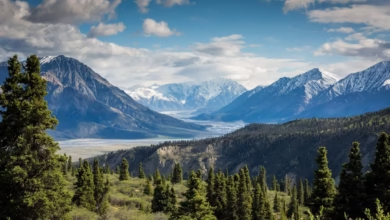Exploring Crude Oil Production: Techniques, Market Trends, and Environmental Impacts in the Global Oil Trade

In a world increasingly dependent on energy, crude oil remains a cornerstone of global economies and an essential driver of technological advancement. The exploration, drilling, and extraction of crude oil have evolved significantly over the decades, influenced by technological innovations and shifting market dynamics. As we delve into the fundamentals of crude oil production, we will explore the various techniques employed in oil exploration and drilling, from conventional methods to modern advancements in shale oil and offshore drilling.
Understanding oil market trends is crucial for stakeholders in the global oil trade, as fluctuations in oil prices can have far-reaching implications for energy security and economic stability. This article will also examine the intricate processes involved in oil refining and transportation, shedding light on the complexities of oil supply chains and the role of OPEC in regulating oil markets.
However, the environmental impact of oil cannot be overlooked. As we strive for a balance between energy needs and sustainability, we will discuss the challenges posed by oil consumption and the potential of oil alternatives, such as biofuels and natural gas. By analyzing the intersection of oil geopolitics, oil field services, and regulatory compliance, this article aims to provide a comprehensive overview of the crude oil landscape and its implications for investors, policymakers, and the environment. Join us as we navigate the multifaceted world of crude oil production and its significant role in shaping our future.
- 1. The Fundamentals of Crude Oil Production: Exploration and Drilling Techniques
- 2. Understanding Oil Market Trends: From Exploration to Oil Refining and Transportation
- 3. The Environmental Impact of Oil: Balancing Energy Security and Oil Alternatives
1. The Fundamentals of Crude Oil Production: Exploration and Drilling Techniques
Crude oil production begins with a crucial phase: exploration. This process involves identifying potential oil reserves beneath the Earth's surface, which requires a combination of geological surveys, seismic studies, and advanced technologies. Geologists analyze rock formations to locate areas with high oil potential, often utilizing data from existing oil fields to predict where new deposits could be found.
Once promising sites are identified, drilling techniques come into play. Traditional drilling methods involve the use of rotary drilling rigs, which can penetrate deep into the earth to access crude oil. However, as oil market trends have shifted and the demand for more efficient extraction has increased, innovative drilling technologies have emerged. For instance, horizontal drilling allows operators to access oil reserves that are spread laterally, maximizing extraction from a single well. This technique has been particularly effective in shale oil production, where the oil is trapped in tight rock formations.
Offshore drilling has also gained significant traction, especially as onshore oil reserves deplete. This method involves drilling beneath the ocean floor, where substantial oil reserves are located. Offshore drilling requires advanced technologies and equipment, making it more costly and complex compared to land-based drilling. The logistics of oil transportation from these offshore sites to refineries require a robust network of oil pipelines and storage facilities to ensure efficient distribution.
The environmental impact of oil production is a critical consideration, with growing awareness around the ecological consequences of drilling and extraction processes. As countries seek to balance energy security with environmental responsibilities, there is an increasing focus on oil alternatives, such as biofuels and natural gas. This shift also affects oil investing strategies, as investors look for sustainable options within the energy sector.
In summary, the fundamentals of crude oil production hinge on effective exploration and drilling techniques. As the global oil trade continues to evolve, understanding these processes is essential for navigating oil prices, compliance with regulations, and adapting to the ever-changing landscape of oil consumption and production. The interplay between oil geopolitics and the need for energy security further complicates the dynamics of crude oil production, making it a vital area of interest for stakeholders across the industry.
2. Understanding Oil Market Trends: From Exploration to Oil Refining and Transportation
Understanding the dynamics of oil market trends is crucial for stakeholders in the oil industry, including investors, policymakers, and environmental advocates. The journey of crude oil begins with exploration, where companies identify potential oil reserves using advanced technologies like seismic surveys. This initial phase is essential for determining the feasibility of drilling and extraction, which can significantly affect oil prices and the overall global oil trade.
Once exploration confirms viable deposits, the next step is drilling. Offshore drilling and shale oil extraction have become increasingly prevalent, particularly in regions like the United States. These methods have expanded oil reserves and contributed to a more competitive market, influencing OPEC's strategies and global oil supply chains. As production ramps up, the focus shifts to oil refining and transportation, which are vital components of the downstream oil sector.
Oil refining transforms crude oil into usable products, including fuels, petrochemicals, and lubricants. This process not only adds value to the raw material but also ensures that refined products meet regulatory standards for safety and environmental compliance. The relationship between refining capacity and oil prices is intricate; higher refining capacities can stabilize prices, while disruptions in oil supply chains often lead to price volatility.
Transportation plays a critical role in the oil market, with pipelines, tankers, and storage facilities facilitating the movement of oil from production sites to refineries and ultimately to consumers. Efficient oil transportation infrastructure is essential for energy security, especially in a landscape where geopolitical tensions can threaten supply routes. The growing demand for oil alternatives, such as biofuels and natural gas, reflects a shift toward more sustainable energy solutions, yet the reliance on crude oil remains significant.
As oil consumption continues to rise globally, understanding oil market trends becomes imperative for effective oil price hedging and investment strategies. Stakeholders must consider the environmental impact of oil extraction and consumption, alongside the evolving landscape of oil technologies and regulations. This comprehensive understanding will not only inform investment in oil field services but also guide discussions on the future of energy and the transition to less carbon-intensive fuels.
In summary, the exploration, drilling, and extraction of crude oil are just the beginning of a complex interplay of factors that shape the oil market. From oil refining to transportation, each stage influences oil prices and global energy dynamics, making it essential for industry participants to stay informed and adaptable in a rapidly changing environment.
3. The Environmental Impact of Oil: Balancing Energy Security and Oil Alternatives
The environmental impact of oil is a pressing concern in today's energy landscape. As nations strive for energy security, the reliance on crude oil presents a paradox. While oil remains a cornerstone of global energy consumption, its extraction and use have significant environmental repercussions. The exploration and drilling processes, whether through offshore drilling or onshore methods, can lead to habitat destruction, water contamination, and greenhouse gas emissions.
Moreover, the oil market trends indicate that oil prices are often influenced by geopolitical factors and the dynamics of OPEC, which can complicate the path toward sustainable energy practices. As countries grapple with the need for oil while also addressing climate change, the balance between maintaining oil supply chains and investing in oil alternatives becomes crucial. Biofuels, natural gas, and other renewable energy sources are emerging as viable options that could alleviate some of the environmental burdens associated with traditional oil refining and consumption.
Incorporating oil technologies that enhance efficiency and reduce emissions is essential for mitigating the environmental impact of oil. Innovations in oil field services, such as more effective oil transportation and storage solutions, can minimize risks linked to oil spills and leaks. Additionally, stringent oil regulation and compliance measures are necessary to ensure that oil exploration and production activities adhere to environmental standards.
As the global oil trade evolves, stakeholders must consider the long-term implications of oil consumption. This includes understanding oil price hedging strategies that can protect against market volatility while simultaneously investing in greener alternatives. The push for reducing dependence on oil sands and shale oil is gaining momentum, as these resources often come with a higher environmental cost.
In conclusion, navigating the environmental impact of oil requires a multifaceted approach that balances energy security with the development and implementation of oil alternatives. By integrating sustainable practices within the oil industry and fostering innovations in downstream oil operations, we can work towards a future that respects both our energy needs and the planet’s health.
In conclusion, the journey of crude oil production is a complex interplay of exploration, drilling, and extraction that significantly influences the global oil trade and market dynamics. As we've explored, the fundamentals of oil production involve advanced techniques and technologies that not only enhance efficiency but also shape the future of oil investing and energy security. Understanding oil market trends is essential for stakeholders, as fluctuations in oil prices are often tied to geopolitical events, OPEC decisions, and shifts in oil consumption patterns.
Moreover, the environmental impact of oil cannot be overlooked. Balancing the need for energy with the push for oil alternatives, such as biofuels and natural gas, is paramount in today's climate-conscious world. As countries continue to navigate oil regulations and compliance, the focus on sustainable practices in downstream oil operations, including oil refining and transportation, will play a crucial role in mitigating adverse effects.
Ultimately, the landscape of crude oil production is evolving. With the rise of shale oil, offshore drilling, and innovations in oil technologies, the future holds both challenges and opportunities. As we move forward, understanding the intricacies of oil supply chains, storage, and pipelines will be vital for industry professionals and investors alike, ensuring a balanced approach to meet global energy demands while addressing the pressing need for environmental stewardship.





